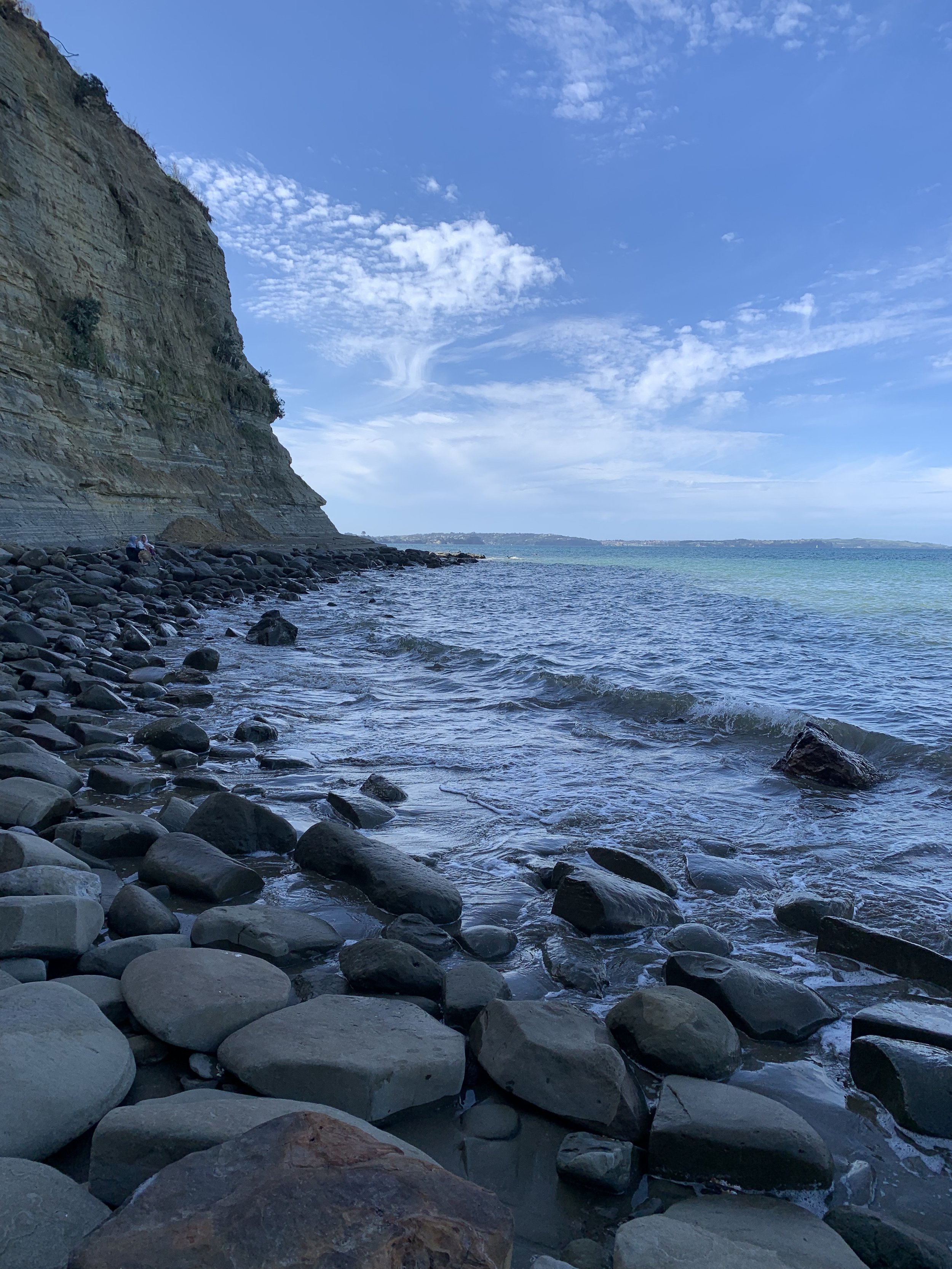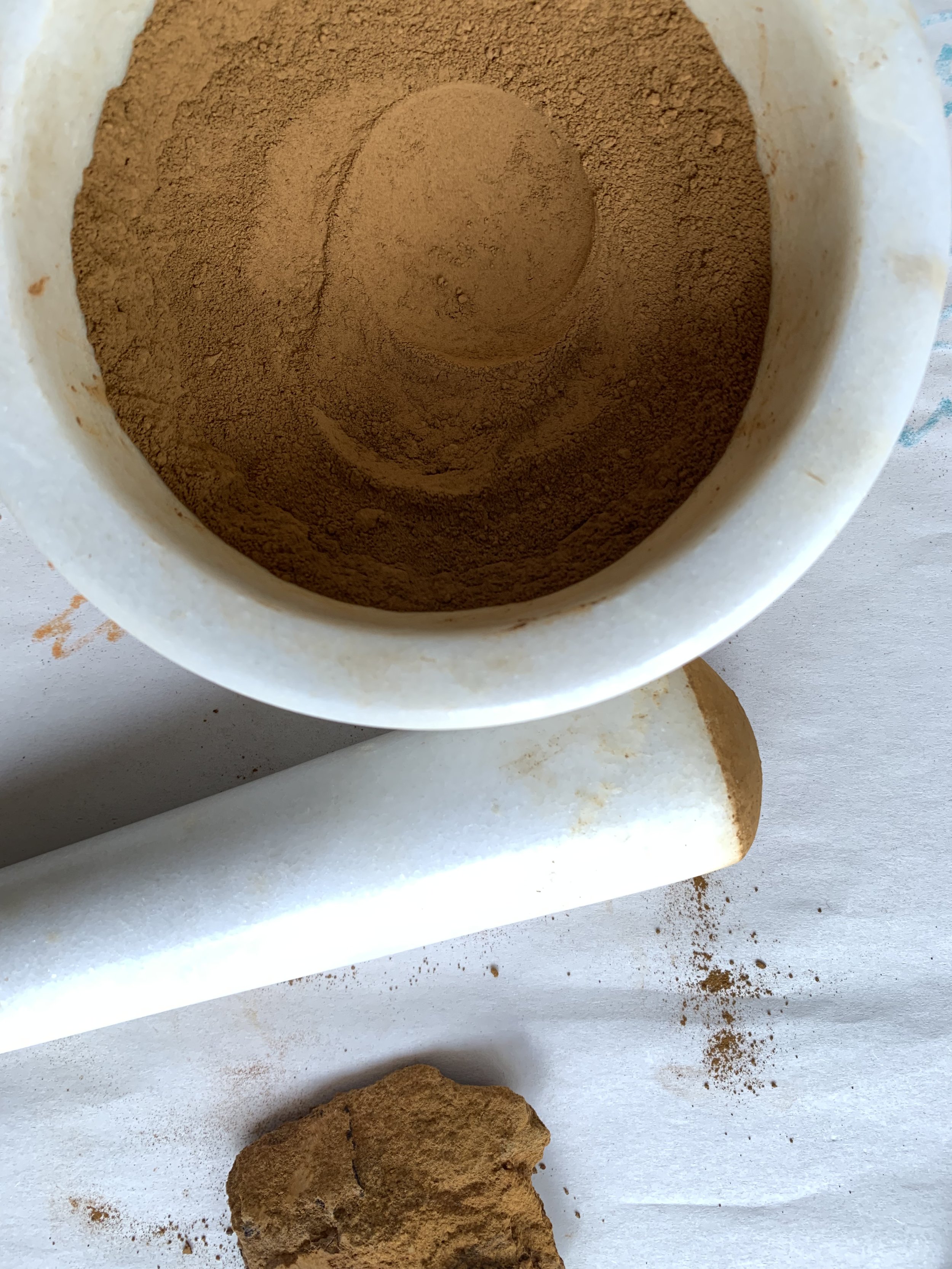Exploring natural found art materials
Earlier in 2024, I decided to focus on developing the sculptural and conceptual side of my art practice, pressing pause on making functional ware and selling regularly at markets. It has been a relief to slow down and spend time thinking about the direction I want to go in.
One of the things I have been exploring is the use of natural found materials in my work, specifically finding wild clay for ceramics and earth pigment for drawing. My creative practice interprets the natural world, creating forms influenced by the environments surrounding bodies of water, so it feels like a natural progression to utilise materials found in those places within the work itself. I am interested in the significance that is imbued by the use of objects found in specific locations. How this relates to the materiality of foraged objects, the relationship of that to myself and my body. The artwork that I was making after finishing art school in 2016 (such as in this exhibition) was also using natural found materials so it feels like I’m coming full circle, pulling at the threads of my practice that have always been there, but may have just been dormant for a while.
I am doing research and learning a lot about wild clay and earth pigment, including the history of humans’ use of earth, the mineral composition of earth pigment and clay, the ancestral (and current) practices for processing and using them, and the practical steps needed to make the raw materials into art materials. There is also a pure childlike joy to be had from exploring natural environments and coming across something bright and beautiful. I have foraged pieces of earth from various places, mostly around Tāmaki Makarau, and some from further afield.
The first time I found earth pigment was was in March 2023 at Oneroa / Long Bay Beach (Ngāti Kahu iwi), Tāmaki Makarau / Auckland. I was there with some loved ones, and we wandered down to the end of the beach, to the rocky area near the cliff face. Investigating the shore for anything interesting, we came across a colourful rock, and realised that it made marks on the rocks around it. We drew patterns on other rocks using it, and not thinking much of it, I brought it home with me. The second interaction I had with earth pigment was through Kauae Raro, a Māori research collective, who introduced me to the idea of earth pigment as art material. Ever since then, I have seen colourful earth everywhere I look. My loved ones can attest that whenever I’m at a beach or river, I’m always keeping an eye out for earth pigment rocks, and scratching the ones that I find onto other harder rocks to see if they make a mark.
I have been aware of wild clay for as long as I’ve worked with ceramics. My explorations started in December 2023 at a beach close to my hometown, Browns Beach near Te Umu Kaha / Temuka (Ngāi Tahu iwi) in Canterbury. It is a long stony shoreline with patches of cracked clay in areas. I gathered a small sample of the grey clay, and took it back to my studio in Tāmaki Makarau to process. My results with this were not successful, I realised after testing that the clay was too tacky and didn’t have enough plasticity to make into an object. The great thing about working with earth pigment alongside wild clay is that, if any clay I collect ends up not being suitable for ceramics, I can always grind it up as I would with earth pigment and use it as a drawing material! Which is exactly what I did with this clay.
I have yet to start the stage of experimenting with the materials in pieces of art, this kind of mahi is slow going, and I have so much more to learn. I can't wait to see where this goes and to share further progress with you. If this is something that also interests you, check out my reading list below for the books I have looked at during my research so far.
Earth pigment found in March 2023 at Oneroa / Long Bay Beach (Ngāti Kahu iwi), Tāmaki Makarau / Auckland. Processed by grinding in a mortar and pestle, washing with water to get only the finer particles, then combined with a binding agent (kauri gum, honey, water), and mulled together. The result is homemade watercolour paint stored in a shell collected from Kakara Bay Beach. More information on this process can be found in the book Found and Ground listed in my reading list.
Clay found in December 2023 at Browns Beach near Te Umu Kaha / Temuka (Ngāi Tahu iwi) in Canterbury. Processed for ceramics by turning into slip (liquid clay), sieved to remove larger particles of stone and organic matter, and left to partially dry. Upon testing and realising it was unsuitable for ceramics, it was processed for use as watercolour paint in the same way as the pigment above from Long Bay.
Reading list for wild clay and earth pigment:
Book of Earth: A guide to ochre, pigment and raw color by Heidi Gustafson
Found and Ground: A practical guide to making your own foraged paints by Caroline Ross
Wild Clay: Creating ceramics and glazes from natural and found resources by Matt Levy, Takuro Shibata, Hitomi Shibata
Additions to Clay Bodies by Kathleen Standen



















